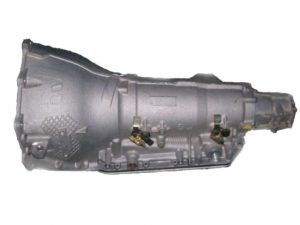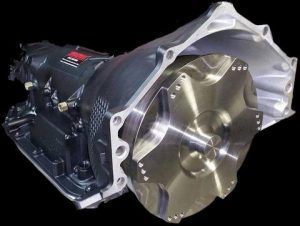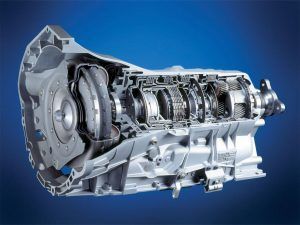Remanufactured Transmissions
Remanufactured Transmissions

A quality remanufactured transmission from Eagle Transmission comes with a 3-year/100,000 mile warranty (whichever comes first).
Rebuilding Procedure
Also called refurbishing, overhauling or reconditioning, the rebuilding process involves disassembling, inspecting, cleaning and replacing damaged or worn parts in our shop by one of our highly trained, qualified technicians. To rebuild your transmission, our technician will remove it from the vehicle, take it apart and inspect all of the key components. Any parts that are still inside the manufacturer’s acceptable wear limits are reused, and anything that’s too worn will be replaced. In most cases, all of the “soft parts” like gaskets, seals, bands and o-rings are replaced. And finally, the whole thing is put back together and reinstalled in the car.
This is why you won’t get a price quote over the phone with Eagle Transmission. Our initial diagnostics are free, so you can be sure that you’re getting an accurate assessment of the health of your transmission. We reuse any parts that are in good condition so you only pay for what you need.
Remanufactured
Remanufacturing a transmission involves completely restoring a transmission back to factory standards in a factory assembly line setting – making it as close to new as possible.
In some cases, the transmission is upgraded to include “bug fixes” and factory updates from the manufacturer such as modifications to the valve body as well as more durable parts (eg. higher quality friction material) to address common weak points of the transmission that typically caused the failure. This ensures that the transmission is as up-to-date as possible with the design and components used in brand new transmissions.
The process starts by disassembling a core (a broken/used transmission), then cleaning and inspecting all of the parts (crankshaft, camshaft and rods, head & block castings, etc.) and checking them against original equipment specifications.
All of the components that are identified as being out of specification (too worn out or damaged), are replaced with new parts or parts that have been requalified to meet very specific tolerances and standards.
The valve body is then tested and remanufactured back to original specification. Metal surfaces are measured and machined to the correct dimensional tolerances. All of the electronic components are tested, then new solenoids and other electrical parts are installed.
After machining and painting the case, the transmission is reassembled on an assembly line, quality checked, then hot/cold tested on a dynamometer or “dyno” prior machine prior to shipment. A dyno is a device that measures torque, power, RPMs and line pressure to make sure the transmission meets specifications and works properly.
Turnaround Time
Rebuilding a transmission takes time. The transmission must be removed, disassembled, parts purchased, reassembled, and installed back in the vehicle which can take 3 to 5 days.
A remanufactured transmission on the other hand, is already complete, and shipped directly from the factory. Depending on the time it takes to be ordered, shipped and delivered, and the installer’s schedule, the job of actually installing a remanufactured transmission should take about 1 to 2 days.
Quality
When it comes down to it, both options are a re-created or “refurbished” transmission made up of a mix of new and old parts. The difference is, all of the key components in a reman transmission are new, and the dyno testing helps prevent problems from even leaving the factory.
The post Remanufactured Transmissions appeared first on
Eagle Transmission North Austin.







